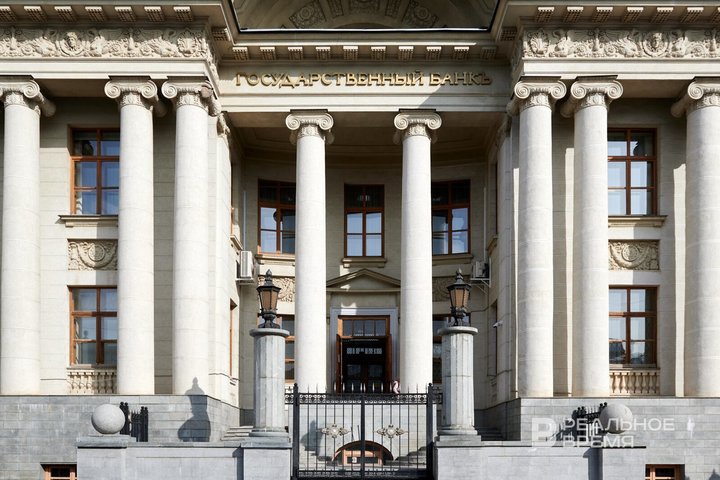Tatarstan businesses take out loans totalling 1.4 trillion rubles

Corporate lending turned out to be not so sensitive to the increase in the key rate and, contrary to the actions of the Central Bank of Russia, it is growing even more actively than in 2023. In September, the annual growth rate of corporate lending in Russia reached 22%. The regulator notes that this refutes the point that loans are no longer available to businesses. In Tatarstan, 38.3% more loans were issued to enterprises in the first eight months of 2024 than last year. Most loans are taken by large businesses — banks have given them loans worth 767 billion rubles, which is by 61.4% more than in the same period last year.
Big businesses borrows big
In January — August 2024, banks issued loans totalling almost 1.1 trillion rubles to corporate clients registered in Tatarstan, which is by 38.3% more than in January — August 2023 (783.1 billion rubles), the National Bank of Tatarstan told Realnoe Vremya.
In January — August 2024, loans totalling 767 billion rubles were issued to large businesses, which is by 61.4% more than in the same period last year (475.2 billion rubles). In the first 8 months of this year, loans totalling 316 billion rubles were issued to SMEs, which is by 2.6% more than in the same period last year (307.9 billion rubles).
As of September 1, 2024, the portfolio of loans issued to large corporate borrowers from Tatarstan amounted to 852.2 billion rubles (+28.3% by January 1, 2024). As of September 1, 2024, the portfolio of loans issued to regional SMEs amounted to 334.9 billion rubles (+10.1% by January 1, 2024).

While retail lending is declining under the pressure of high interest rates, including against the background of the cancellation of mass preferential mortgages, corporate lending continues to grow rapidly. In August and September, according to the Bank of Russia, it added 1.6 trillion rubles each, at an annual rate of 22%. These figures refute the point that loans are no longer available to businesses.
The Bank of Russia believes that fears that the economy will start to fall due to the high interest rate are greatly exaggerated. A large proportion of companies operate without loans. And a threat to the economy, according to the regulator, is not expensive loans, but a shortage of personnel in the labour market. Even with the current monetary policy, the Bank of Russia does not expect a decrease in investments from enterprises.

There is an annual growth in corporate lending, but in recent months its pace has decreased significantly, so the banking system is fully responsive to what the Central Bank is doing, Tabakh believes.

At the same time, next year, an important constraint on the growth of the corporate portfolio will be increasing capital adequacy requirements, as well as the introduction of a counter-cyclical surcharge. This may slow down the growth rate of capital utilisation of the largest banks, which account for the bulk of disbursements in this segment, he added.
“Indeed, we are now seeing an increase in demand for loans in the medium-sized business segment, but the demand of small businesses remains stable," the press service of the Bank of Kazan commented to Realnoe Vremya.
Among the growing segments, the bank highlighted the trade in vehicles and special equipment: imports from China are increasing, which is driving up the demand for loans, and there is consistently high demand from fuel suppliers. The bank does not expect corporate lending to cool down — business opportunities are limited without borrowed funds. At the same time, it is possible that cooling will be observed among microbusiness representatives.
“In 9 months of 2024, the loan portfolio of large and medium-sized businesses of Rosbank in Tatarstan showed an increase of 20% compared to the same period in 2023," she said Ksenia Nikulina, the regional head of corporate client development at Rosbank in Tatarstan. “Despite the increase in the key rate and conditions of economic instability, companies continue to need borrowed funds to finance their operations or investments, to overcome external or internal challenges. In addition, the government supports the growth of lending through subsidising rates for special programmes for small and medium-sized businesses.”
In her opinion, it is not worth expecting a significant decrease in demand for loans due to the high key rate. “But banks may begin to assess credit risks more carefully, which will lead to increased requirements for borrowers," she does not rule out. “This may limit the availability of loans for less reliable companies, but large corporations with good assets will still be able to attract financing.”

Not a threatening, but somewhat frightening situation

“If we look at the whole, the situation in corporate credit looks calming," the analyst estimates. “However, it is surprising that the rapid growth of the key rate does not slow down the growth of the loan portfolio. So, as of October 1, the annual growth in this segment was 21.8% compared to 20.1% on October 1 last year. The locomotive of corporate lending is accelerating without noticing the growth of the key rate, which contradicts the macroeconomic logic, according to which an increase in interest rates should slow down lending. “The answer was simpler than expected”: there is no contradiction, there is just a powerful factor weakening the effect of tight monetary policy: this is the infusion of public funds into the economy in the form of state subsidies, government contracts, and so on.”

The second point of concern is that as of September 1, 53.1% of the corporate loan portfolio consisted of loans with a floating interest rate, primarily linked to the key rate. In the context of a growing key interest rate, such loans can be considered as a time bomb. “Ultimately, enterprises may not be able to cope with the rapidly increasing debt burden, especially in those industries where there is no significant government support," the analyst warns.
In particular, the construction sector, which has lost its non-targeted preferential mortgage since July 1, may be seriously affected, the expert notes. The market mortgage is “at death's door” due to unaffordable rates. Mortgage issuance in September decreased by 61% year-on-year.
“So far we have not seen a wave of mass defaults. . . The situation for developers is extremely difficult. A crisis in the construction industry is something that we would like to avoid. But its probability is increasing.”